Landscape construction is an effective way to improve the territory of a country or suburban area, to make it unique. Many owners of private houses use various tricks, starting with the design of the tracks, ending with green hedges. Today, the most popular method of arranging the territory is gabions with your own hands: step-by-step instructions are so simple that the construction of the structure can be done independently.
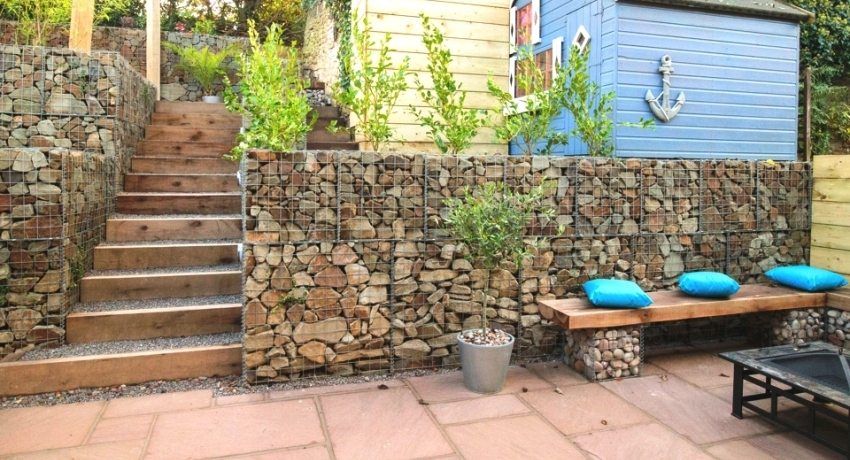
What is gabions: a general definition and description
Gabions are containers consisting of metal wire. The gabion device involves the construction of a frame, into which a certain material is placed.
Filling material can be:
- wood;
- rubble;
- a rock;
- cobblestones;
- gray pebbles.
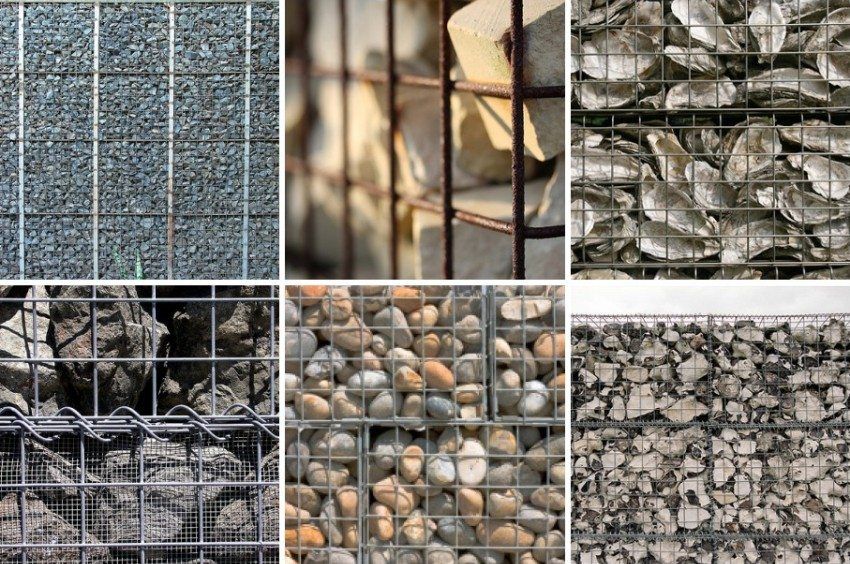
Helpful advice! It is recommended to use fine gravel for masking empty spaces formed between large parts.
The design has a large size and is created from twisted wire and mesh. At large dimensions, additional installation of sectional compartments is performed. They will not allow the deformation of the walls under the mass of stones that fill the metal frame.
Doing your own hands with gabions is cheap, so they are so popular among owners of country plots. Such a product does not require much effort in relation to its care; it is equipped with a lid on top.
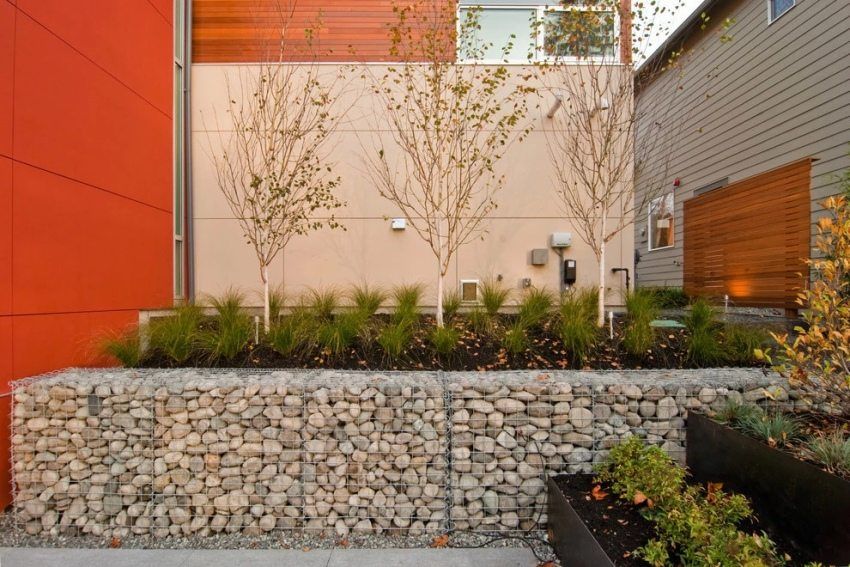
One of the advantages of structures from gabions is their attractive appearance, as evidenced by the photo of gabions in landscape design. Due to the wide variety of fillers for the mesh frame, a unique exterior design can be achieved. These designs are reliable and durable.
Gabions were widely used as fortifications on the fields of military operations. In literal translation, the name of such a structure means “stone in the grid.” Today, the technology of construction of gabions in landscape design has been successfully applied.
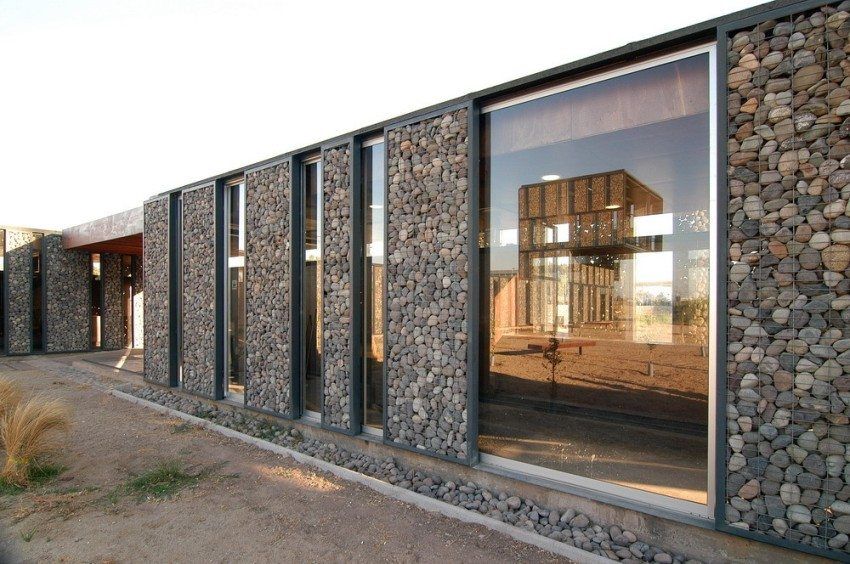
Designs are set as:
- the basics for the creation of furnishings on the site and the courtyard (the formation of street chairs and benches, tables and chairs);
- frames for vegetation;
- retaining walls for strengthening hangars;
- building material for creating lawns and stone gardens;
- bases for the formation of partitions, arches, strong beds with a vertical type of placement;
- strengthening structures for fixing the soil of the coastal zone of lakes and rivers in the vicinity of the site or house;
- decorative elements to decorate the area (installed at the entrance to the courtyard, in the area where the stairs are located);
- material for the construction of stairs intended for the descent to the water.
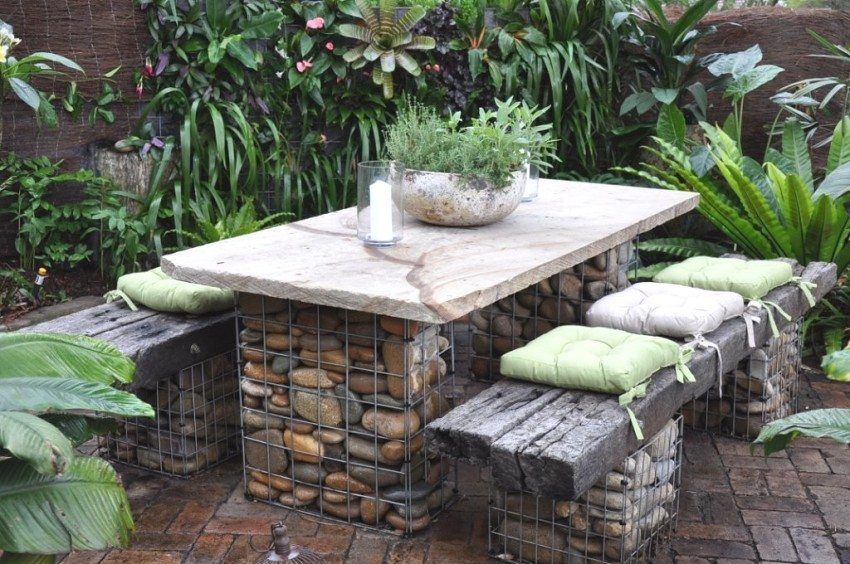
Helpful advice! The installation technology of gabions can be effectively used for zoning space. These structures are used not only as external fences (fences separating the local area from the street and neighbors), but also to divide the total area into areas, for example, a rest area, a place to install a stove, a barbecue, a grill, an area to accommodate a summer shower. etc.
Most often, information on how to make a gabion with their own hands, is interested in the creation of fortifications on the site, because they have a number of advantages.
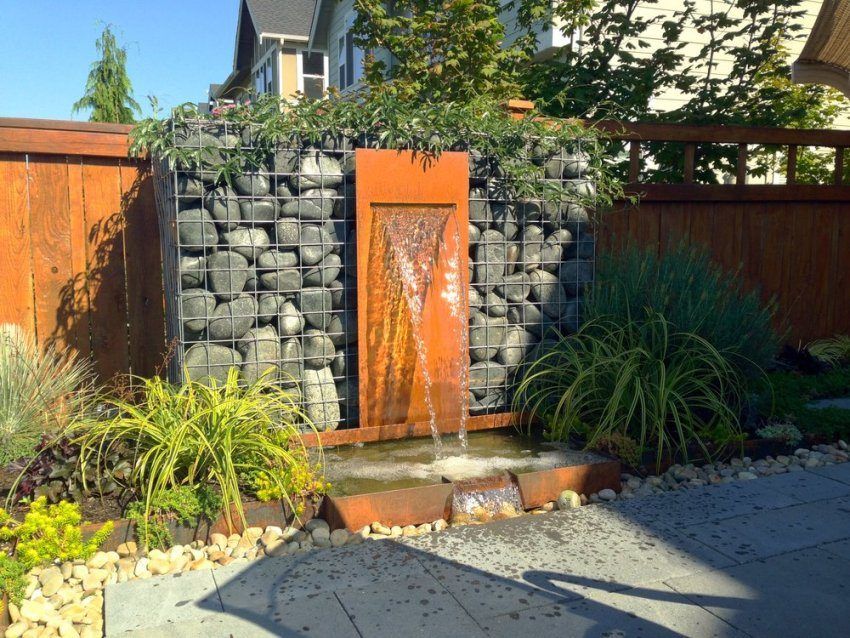
The advantages of reinforcing structures:
- there is no need to use specialized construction equipment, so the process of construction of gabions does not harm the surrounding forms of the landscape;
- products have a high capacity, which is why air and water flows freely through them. Due to this, a high level of ecological construction is achieved. Constant access of air contributes to the normal growth of plants, and the structures themselves do not have a negative impact on the landscaping of the site;
- grid cells for gabions do not create obstacles for grass germination. As a result, a beautiful fusion effect is obtained without such negative consequences as deformation of the building or violation of its functions;
- the stones inside the frame are not fixed, so that the filling of the partition remains mobile, which reduces the level of hydrostatic pressure;

- Seasonal displacement of the soil can not harm the products. Even with significant changes, the construction will not lose its integral forms, only slight deformation is possible;
- due to the plants, which every year more and more germinate between the stones, the strength of the structure increases.
In the framework of the general classification, the following types of products are distinguished:
- box type;
- flat;
- cylindrical type.
The box gabion designs are called Jumbo. The grid in them forms cells of hexagonal or rectangular shapes. This option of construction is the most dimensional, since the products can have a width of about 2 meters. Their length is 6 meters, and the height reaches one meter.
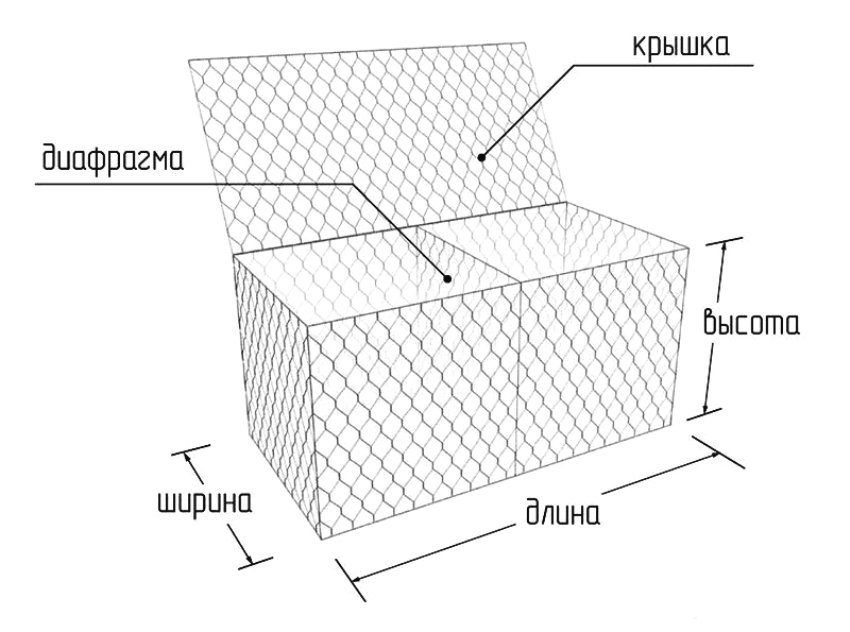
Note! Given the fact that the Jumbo facilities are so variable in size, their frameworks are necessarily complemented by partitions. During construction, not only the net method of forming the frame can be used, but also the welded one.
Scope of Jumbo:
- soil protection against erosion;
- production of retaining walls from gabions;
- soil condition monitoring.

Products of cylindrical shape are called gabions-bags. With the help of them the foundations located under the water are equipped. This type of construction has increased flexibility.
Flat products have a height of 17 to 30 cm. They are called Renault mattresses and are laid out over uneven surfaces, as they have the ability to adapt to them.
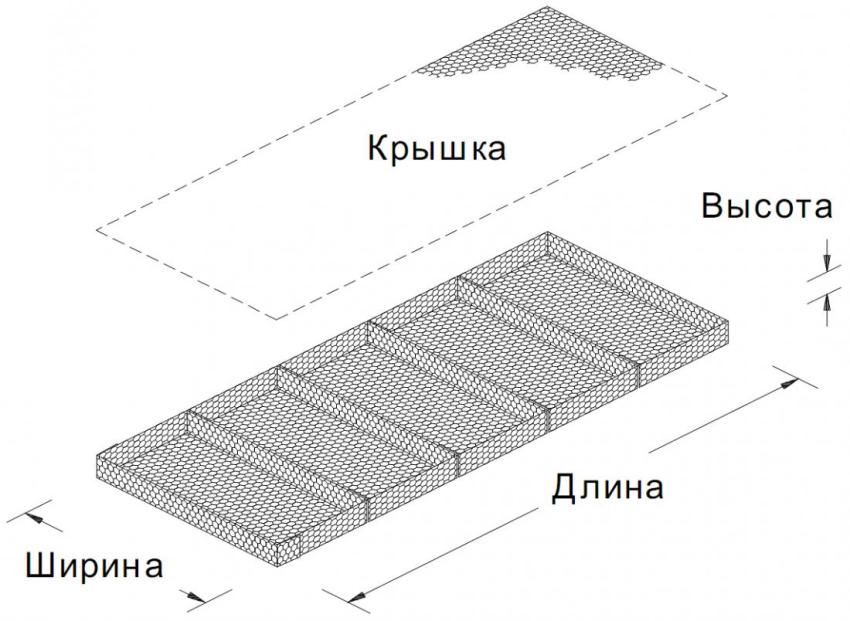
Scope of Reno mattresses:
- foundation for retaining walls;
- landscape construction;
- fixing bridge cones;
- control of the river bed;
- coastal reinforcement;
- pipeline protection.
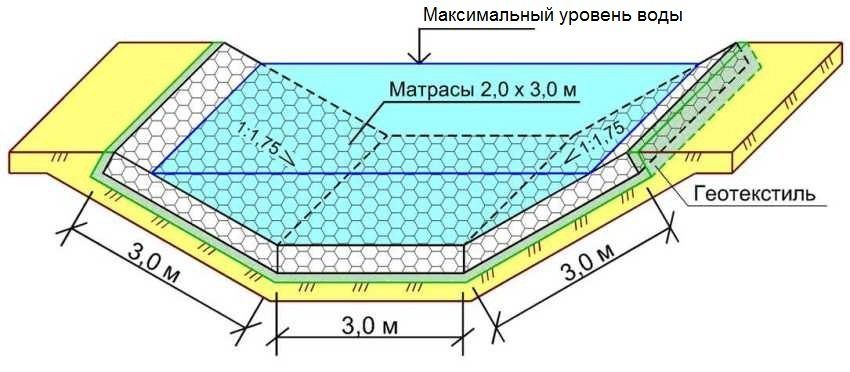
To simplify your job – you can purchase ready-made designs. Modern stores offer a wide range of products for the formation of gabions. But the finished parts of the frames do not always correspond to the required size. In some cases it is easier to create a gabion yourself. The first stage of construction involves the design of the future composition and the calculation of the required amount of materials. If you want to make a design with your own hands, the photo of gabions can be used for inspiration and design for your own unique project.

